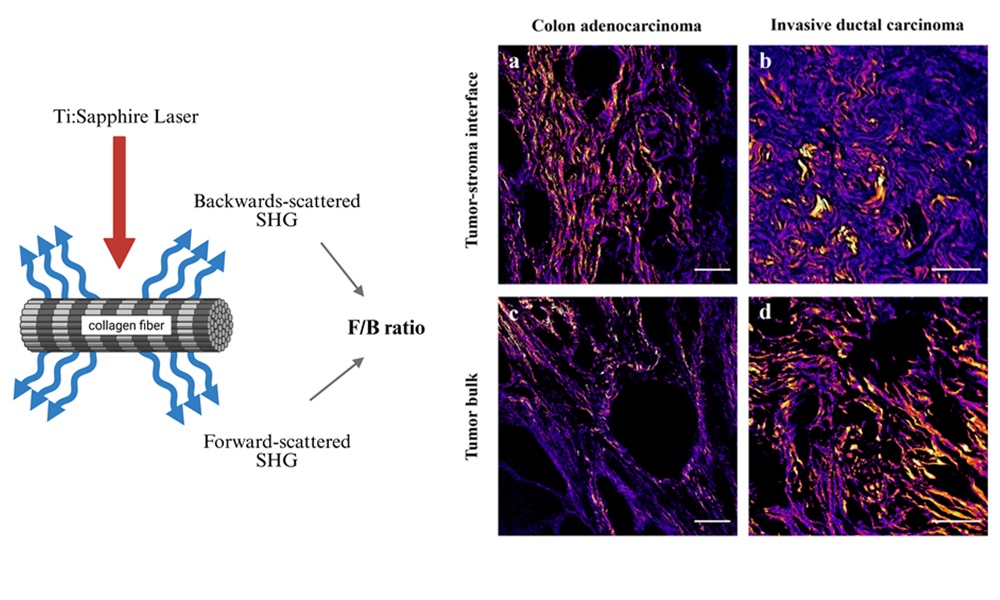
In cancer care, accurate tools for predicting whether a tumor will spread (metastasize) can help patients receive the most appropriate treatments. But existing prediction methods don’t always work equally well for everyone. In particular, Black patients with breast or colon cancer often experience worse outcomes than White patients, despite receiving similar care. A new study from researchers at the University of Rochester, published in Biophotonics Discovery, suggests that differences in the structure of collagen—the main protein in connective tissue—may help explain part of this disparity.
The study focused on two types of cancer: invasive ductal carcinoma (a common form of breast cancer) and stage I colon adenocarcinoma. Researchers used a special imaging technique called second-harmonic generation (SHG) to examine collagen fibers in tumor samples from over 300 patients. This technique allowed them to measure how collagen is organized in and around tumors—information that could be used to predict the risk of metastasis.
Two features were of particular interest: the ratio of light scattered forward versus backward by the collagen fibers (known as the F/B ratio), and how varied the angles of the fibers were (fiber angle variability, or FAV). Prior studies have shown that these measurements are associated with the likelihood of metastasis.
In this study, researchers found that the F/B ratio differed significantly between Black and White patients. Among breast cancer patients, the F/B ratio in the tumor-stroma interface—a key region where cancer cells interact with surrounding tissue—was lower in Black patients. This pattern has previously been associated with a higher risk of metastasis. In colon cancer patients, Black individuals tended to have higher F/B ratios, which may also indicate a more aggressive tumor behavior based on earlier research.
Interestingly, the variability in fiber angle (FAV) did not differ by race in either type of cancer. This suggests that not all collagen-based features are influenced by racial differences.
The findings raise important questions about how race-related biological differences—possibly influenced by genetics, environment, or other factors—could affect cancer progression and the effectiveness of diagnostic tools. They also point to the need for more diverse patient representation in clinical trials. If prognostic tools are developed using mostly data from White patients, they may not work as well for others.
The researchers recommend that future clinical studies include more participants from underrepresented groups to ensure that new prediction methods are accurate for all patients. They also emphasize the importance of continuing to study how tumor biology may differ across racial lines to improve health outcomes for everyone.
For details, see the original Gold Open Access article by T. Elias et al., “Exploring racial differences in second-harmonic-generation–based prognostic indicators of metastasis in breast and colon cancer,” Biophoton. Discovery 2(2) 022703 (2025), doi 10.1117/1.BIOS.2.2.022703